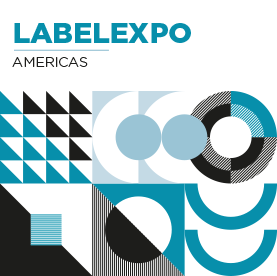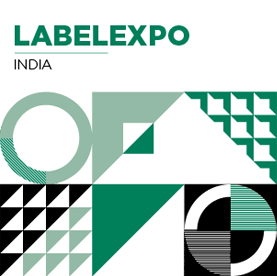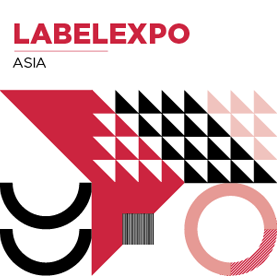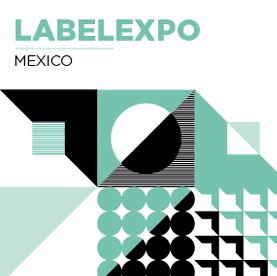Linerless is more: embracing a linerless label future
Click on image to download high resolution version
In a 2020 article for Labels & Labeling, Mike Fairley reported some stark figures: less than five percent of the 60 billion square meters of global production of laminates with silicone liners were being reused or recycled. Additionally, label converters typically waste five to 10 percent of the original laminate during production and handling.
Further, in some countries, the silicone liner is already being taxed as packaging material and it is becoming ever more complicated and costly to dispose of after usage.
The rising concern about liner waste has driven the development and adoption of linerless labels, particularly in the logistics and retail sectors. Wayne Middleton, senior linerless segment lead at Avery Dennison’s Label and Packaging Materials EMENA, says: ‘Growth rates for linerless labels are increasingly well into double figures as we look forward, driven by greater awareness of the need to improve the sustainability of the industry and with on-going technical advancements. As the number and type of applications increase, the experience level grows, bringing new levels of innovation and capability. Demand will increase, driving us to a linerless future.’
In its latest Awareness Report, global consultancy Alexander Watson Associates (AWA) forecasts an 18.4 percent CAGR growth for linerless labels between 2022 and 2025.
Linerless advantage
Traditional self-adhesive labels come with a backing material known as a release liner, which is discarded after the label is applied to a product or package. Eradicating the backing, which typically ends up as landfill waste, is an immediate win.
‘Linerless labels also eliminate approximately one-third of material use, generate less waste, increase uptime and reduce the need for roll changes,’ says Andoni Rodriguez, business segment director of logistics, retail, office and linerless at UPM Raflatac. ‘Linerless labels can be cut to any length, lowering material costs by reducing the need to stock a variety of label materials, thus consolidating stock-keeping units.’
“GROWTH RATES FOR LINERLESS LABELS ARE INCREASINGLY WELL INTO DOUBLE FIGURES, DRIVEN BY GREATER AWARENESS OF THE NEED TO IMPROVE THE SUSTAINABILITY OF THE INDUSTRY AND WITH ONGOING TECHNICAL ADVANCEMENTS”.
Adds Jay Kim, managing director, Bixolon Europe: ‘Essentially, the printer cuts the label to the length required based on the amount of print – so a label for a coffee cup, for example, will be smaller than one for complex, multi-item food delivery order. The result is optimized use of label rolls, with minimal waste.’
Middleton adds that there is also the potential for elimination of the waste matrix produced when die-cutting labels, along with waste reduction by diverting liner from landfills or incineration.
‘The reduction in materials needed to supply the same number of labels can be significant,’ says Kim. ‘This directly relates to a reduction in carbon footprint and water usage. Coupled with the ability to introduce recycled content into the label face materials and industry-wide initiatives such as liner collection schemes for recycling, there are several layers of sustainability improvement - reduce, reuse and recycle.’
Beontag’s variable information printing (VIP) linerless label has demonstrated a 35 percent lower carbon footprint and a 33 percent reduction in water consumption compared to a product with the liner in the same application, with benefits at every stage of its life cycle.
Barbara Dunin, director of marketing and ESG at Beontag, states: ‘By eliminating the need for a liner, it achieves a significant
38 percent reduction in post-consumer waste during the end-of-life phase, based on the weight of post-consumer waste per square meter. Furthermore, this can aid in complying with environmental directives and support waste-reduction efforts.’
The benefits of Beontag’s linerless labels are measured from a cradle-to-grave comparative Life Cycle Assessment (LCA) adhered to ISO 14040 and ISO 14044 standards and certified through a rigorous third-party verification for the Type III Environmental Product Declaration (EPD) issued in compliance with ISO 14025.
ETI has a long history of building machines that allow converters to manufacture linerless labels in-house. Maxime Bayzelon, president at ETI, says in-house production can enhance the sustainability profile of linerless labels.
‘When a label printer/converter manufactures linerless labels from A to Z, that is, by coating in-house, the inline manufacturing process plays a pivotal
role in minimizing material usage,’ states Bayzelon. ‘The printer/converter will carefully choose the raw materials (paper or film, silicone and adhesive), selecting those that meet the specific needs of its client and the final end-use application.
For example, if a specific coating weight of adhesive is sufficient for an application, we will not use/consume more than necessary.
‘The essence lies in crafting precise formulations tailored for each specific application, resulting in optimal performance and quality. This approach also ensures that we use exactly what is needed, preventing unnecessary waste.’






